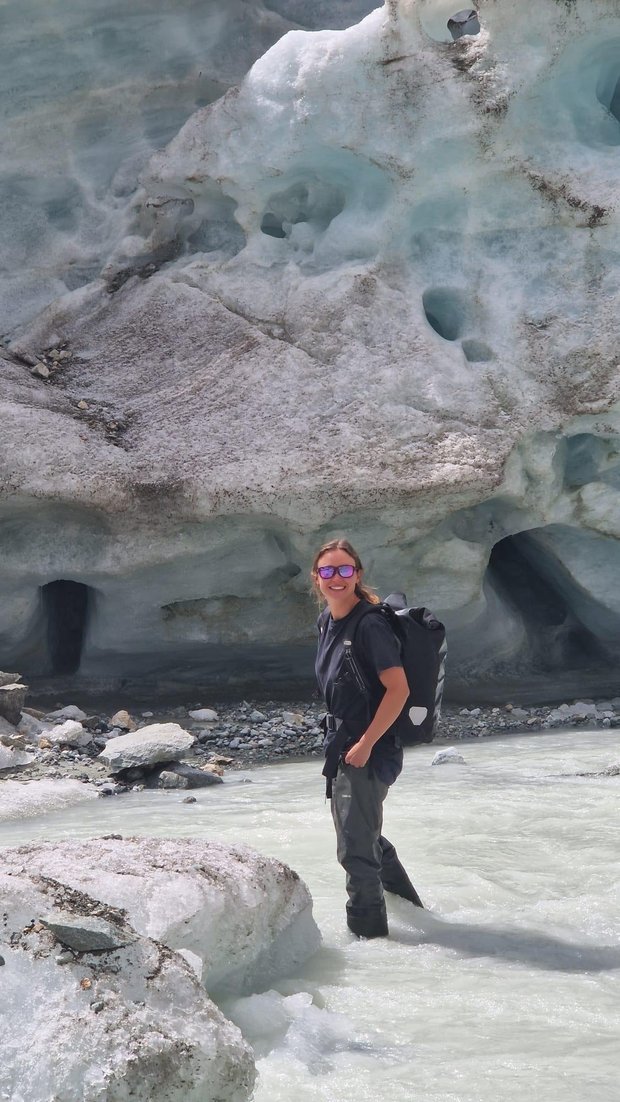
Eva Wolf
UNIL Lausanne, Switzerland
Project: Seismic sensing of subglacial to proglacial marginal sediment flux
My research objectives: Bedload transport in subglacial rivers and its contribution to glacial erosion is only partly understood. Access to measure this process is restricted, but seismic monitoring allows to identify and quantify coarse particle movement in the stream. We measure seismic signal in front of the glacier terminus as well as in boreholes in the ice and invert the signal to obtain bedload transport rates. We compare this rate along different glaciers and years and relate the results to other erosion processes.
Last News (Newletter #5, Fall/Winter 2024):
The last three months marked a stark shift—from carrying sledges across the ice of Otemma Glacier to delving into my fieldwork data, illuminated only by the glow of my screen. I started to analyse my data from this years fieldwork on Otemma Glacier.
My first task was to localize the fiber optic cable which we installed across the glacier surface. Therefore, we had done a tap test in the summer. Along the cable, we hit a metal plate several times using a hammer and recorded the timing and location. These hits can now be found in our seismic records and tell us where exactly which channel of the fiber optic cable is located. In October, I was looking deeper into this data, locating each hit and writing an algorithm to automatically detect and connect the channels.
After that, I went back into my work to locate the subglacial channel on Otemma glacier using the method of Matched field processing. We are now comparing the results of a rectangular array which we got in June with the ones from August, where we had three arrays (7 nodes) of triangular shape, arranged in a triangular serng. The next step is doing same using the seismic data from the fiber optic cable, which gives us the opportunity to have 875 input records instead of just 30. I am varying frequency bands and starting points to find a stable result.

